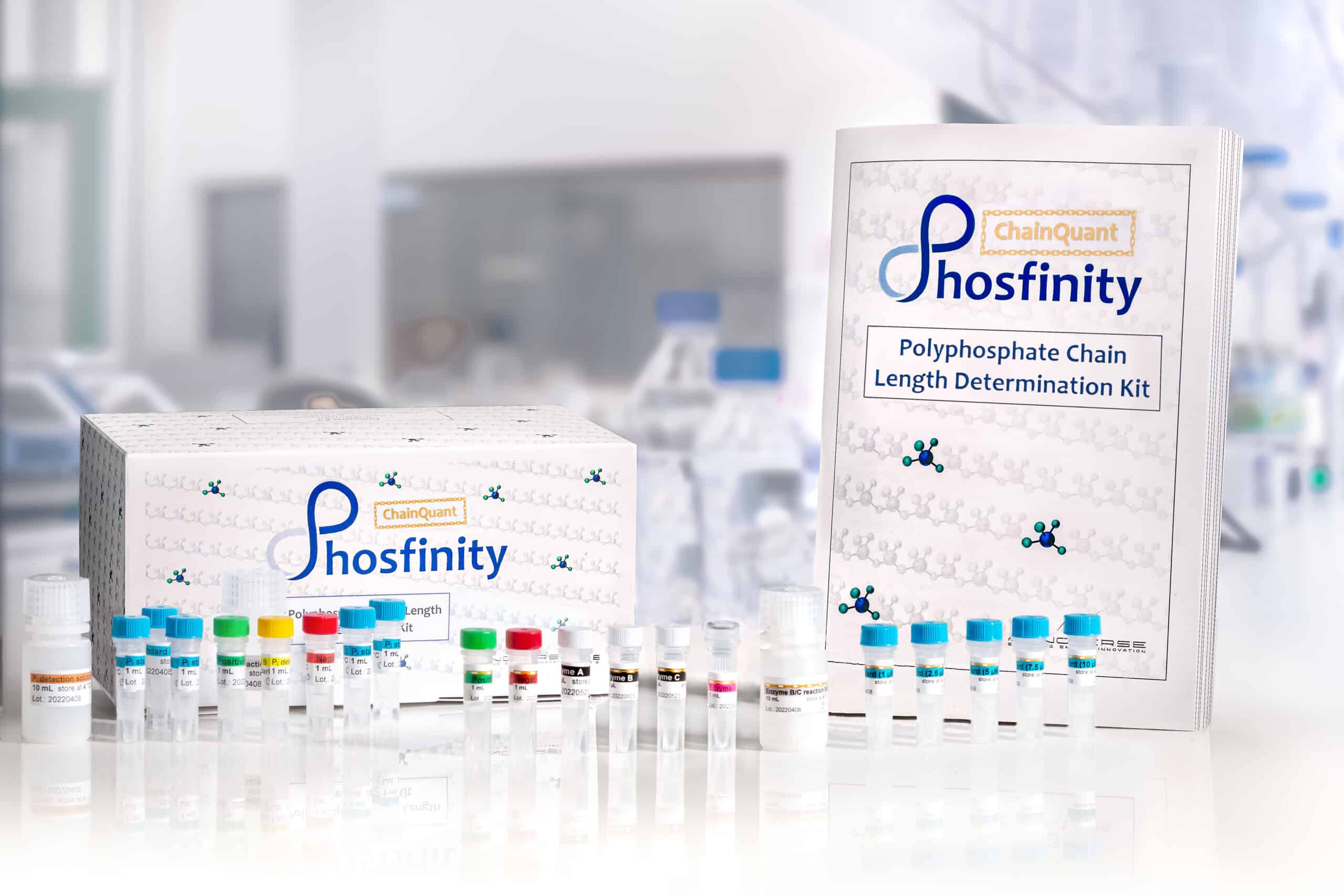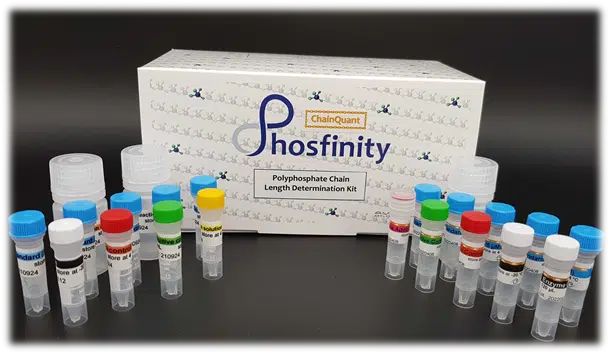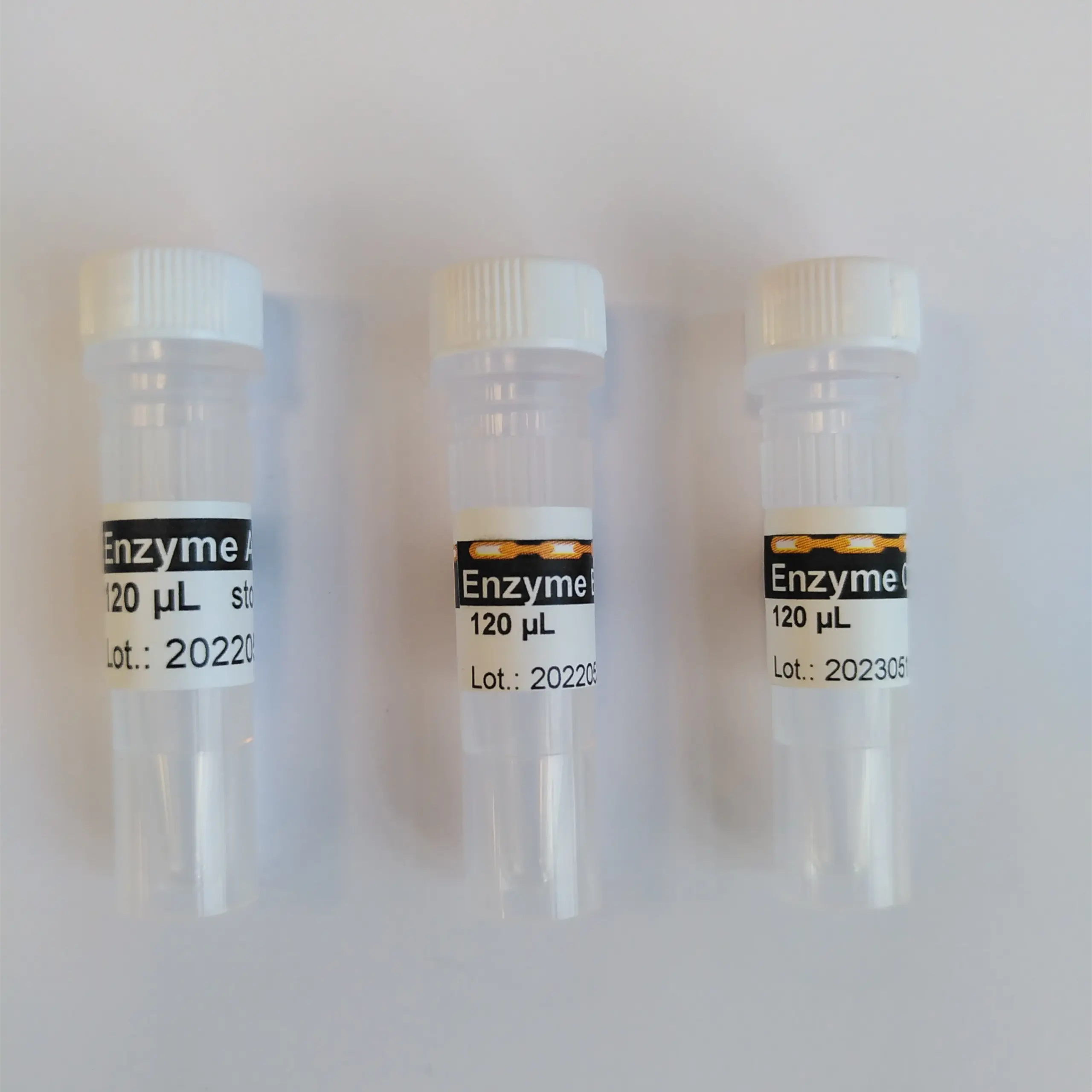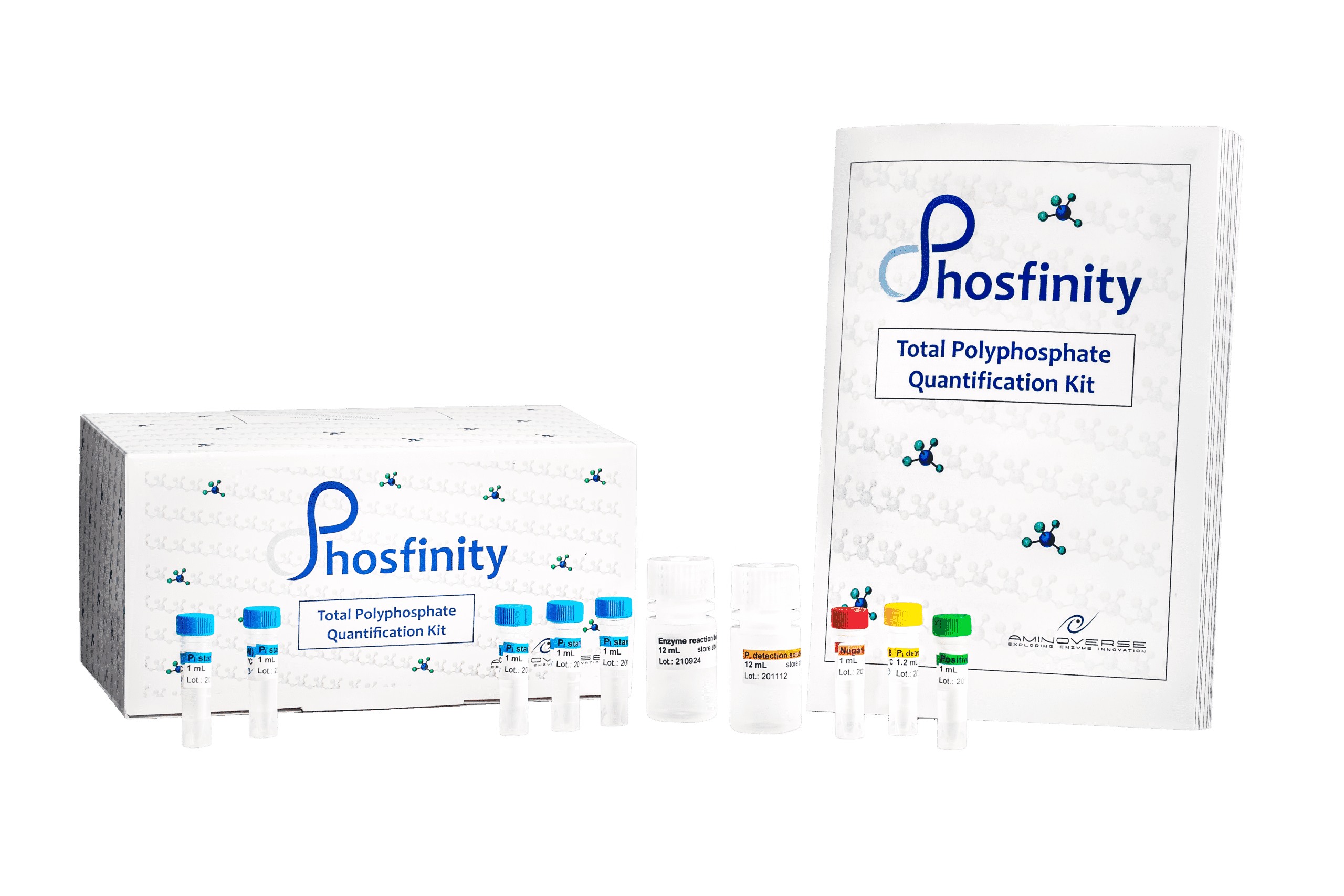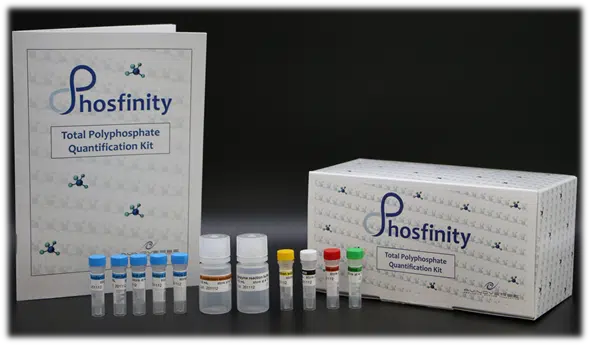Phosfinity ChainQuant
Available now: the world first kit to measure polyphosphate chain lengths.
1
799 EUR net
/ 100 reactions

World first
PHOSFINITY ChainQuant is the first solution worldwide to accurately determine polyphosphate chain length. It was co-developed with Dr. Jonas J. Christ (former Post-Doc at Institute of Applied Microbiology, RWTH Aachen) and Prof. Dr. Lars M. Blank (Head of Institute of Applied Microbiology, RWTH Aachen), two experts in polyphosphate analytics.

Any phosphate chain length
PHOSFINITY ChainQuant allows to determine the average total polyphosphate chain length irrespective of chain length in a sample within minutes – especially useful for blood, soil, plant, microbial, and water samples.

Quick polyP quantification
PHOSFINITY ChainQuant is the world’s only and affordable solution to quickly quantify the polyphosphate chain length and concentration in up to 100 samples in parallel.
Download Analysis Sheet (Excel)
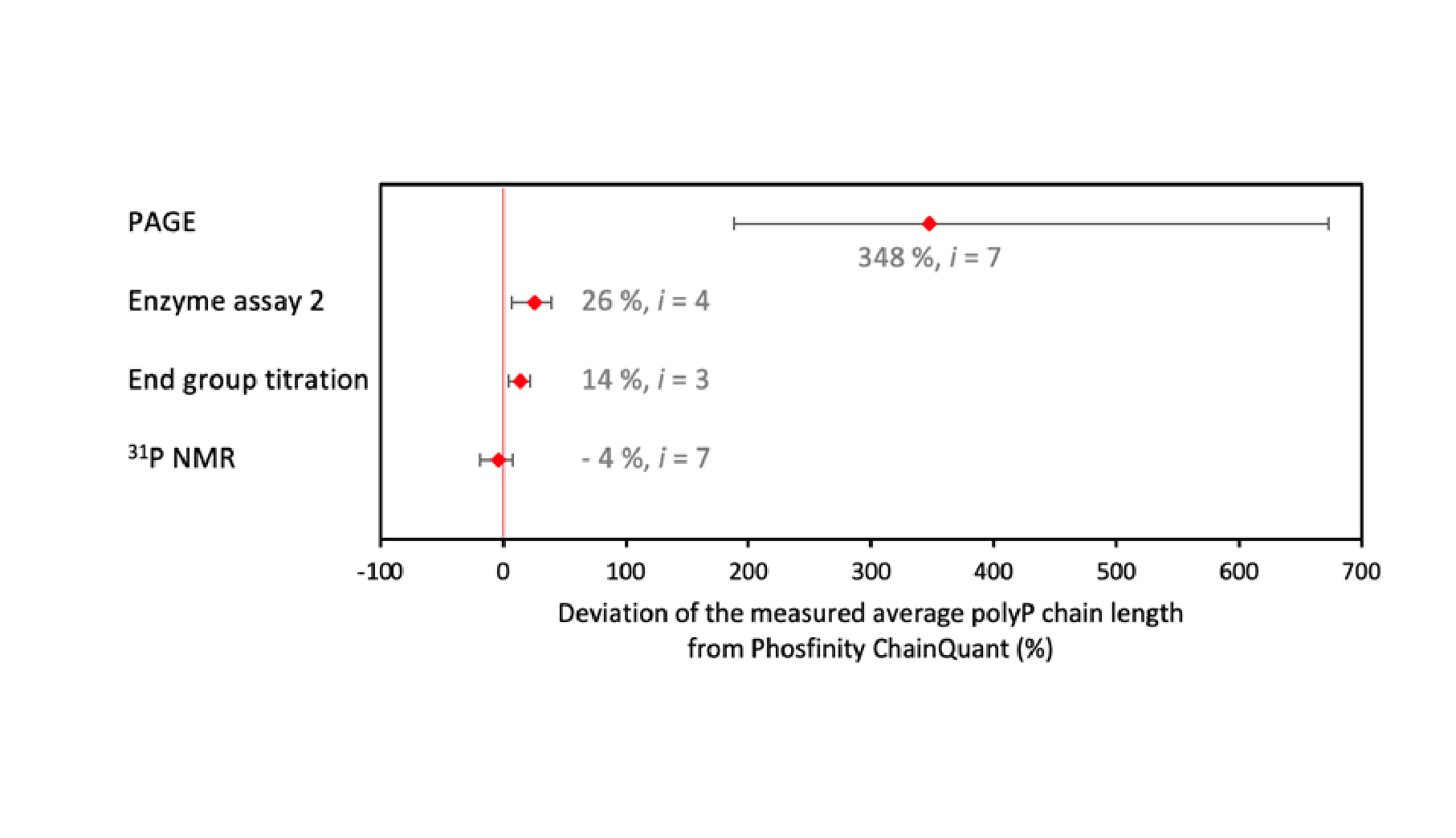
Comparison of the Phosfinity ChainQuant kit, polyacrylamide gel electrophoresis, and other methods for the determination of the average polyphosphate chain length
In this paper Dr. Jonas J. Christ compares measuring results of five different methods for the quantification of the average polyphosphate (polyP) chain length.
“The study confirmed that Phosfinity ChainQuant, 31P NMR, an alternative enzyme assay, and end group titration are suitable methods for the determination of the average polyP chain length. However, 31P NMR requires an expensive NMR machine and takes about 30 min per sample. End group titration is limited to pure polyP. The alternative enzyme assay is limited to polyP with a chain length of ca. < 50 P-subunits. Phosfinity ChainQuant can measure all polyP chain lengths, is affordable, requires only a plate reader, and tolerates contaminating substances. Thus, Phosfinity ChainQuant is the ideal tool for the polyP researcher."
Find out more details in the paper below.
Download the full paper here!
“The study confirmed that Phosfinity ChainQuant, 31P NMR, an alternative enzyme assay, and end group titration are suitable methods for the determination of the average polyP chain length. However, 31P NMR requires an expensive NMR machine and takes about 30 min per sample. End group titration is limited to pure polyP. The alternative enzyme assay is limited to polyP with a chain length of ca. < 50 P-subunits. Phosfinity ChainQuant can measure all polyP chain lengths, is affordable, requires only a plate reader, and tolerates contaminating substances. Thus, Phosfinity ChainQuant is the ideal tool for the polyP researcher."
Find out more details in the paper below.

Advancing polyphosphate analysis
We are proud to have co-developed the newest addition to the PHOSFINITY series – PHOSFINITY ChainQuant which enables the PolyP community for the first time to accurately measure the polyphosphate chain length.
NEW! Phosfinity Chain Quant Enzyme mix PCQ
1
599 EUR net
Testimonials

Quick and specific
The PHOSFINITY Quant kit is a huge advance for the field, in that it lets labs make accurate and specific polyP measurements quickly and without having to invest significant time in developing their own tools or needing the equipment to purify their own enzyme reagents. The Phosfinity kit is a phenomenal resource for the research…

LARGE QUANTIFICATION RANGE AND ANY CHAIN LENGTH
PHOSFINITY determines average polyphosphate chain length, quantifies polyphosphates of any chain length with a Quantification range between 5 to 200 µM P as polymer

LITTLE SAMPLE AMOUNTS REQUIRED
PHOSFINITY just requires samples in the microliter range, e.g. 200 µL of a 100 µM P as polymer sample.

QUICK COLORIMETRIC ENDPOINT DETECTION
Obtain your polyP measurements in just 2 minutes with our easy-to-use protocol

UNRIVALED SPECIFICITY
PHOSFINITY is highly specific towards polyP thanks to the accuracy of the employed enzymes

NO INTERFERENCE
Commonly encountered compounds like ATP, DNA, RNA, NaCl and others do not interfere with the polyP measurement

CALCULATION MADE EASY
Use our pre-made and free Excel sheet to rapidly determine polyP concentrations and chain lengths and save time building one on your own
Download Analysis Sheet (Excel)

Measuring polyP chain length is finally possible!
Following the request of many PHOSFINITY users, we made accurate polyP chain length determination possible with the PHOSFINITY ChainQuant kit. Let's have a chat if you consider using it for your research.
Book a call with Jan
Phosfinity Quant
The gold standard in polyphosphate quantification.
1
399 EUR net
/ 100 reactions

FAQ
Q1: Should I report polyP concentrations as mol/L or as g/L?
A: We prefer expressing the polyP measurements as mol per liter as monomer because the molecular weight of polyP is dependent on many (often unknown) factors which are:
– water content. Dry at 100°C over night and weigh to determine. This can be up to 7 % of the mass.
– cation composition. This is usually sodium in chemically produced polyP. In biological samples this is unknown. See also the pH considerations below
– chain length. Every block of the polyp chain has one negatively charged „docking station“. The terminal block has one additional docking station. Therefore, the ratio between cations and phosphor shifts with the chain length.
– pH: some polyPs react acidic, some neutral, some basic. Therefore, not only cations such as sodium bind to the chain but also protons, which are, of course, lighter.
Q2: I weigh in different polyPs at the same mass concentration (g/L) but obtain different results in mole per liter. Why is that?
A: See Q1. To explain the results one must also look at the cyclic polyP content. Our enzyme does not open up cyclic polyP chains. Cyclic polyP content can be quantified by 31P NMR. We found that chemically produced polyP contains up to 11 % cyclic polyP. We suggest to prepare polyP standards by diluting according to the total polyP measurement results.
Q3: The polyP chain length measurements from the Phosfinity kit do not match the length which is stated by the manufacturer. Why is that?
A: The chain length description of the manufacturer is oftentimes wrong. Commercial polyPs are all a mixture of many different chain lengths (except for polyP2, i.e. pyrophosphate). The term „hexametaphosphate“ has historical origins. There is no chemical method to produce a certain polyP chain length. The difference lies in the time of condensation during synthesis. The longer you heat up the phosphate substrate, the longer the polyP product. But it is always a mixture of many different chain lengths. Another factor is chain length detection by polyacrylamide gel electrophoresis (PAGE). Here, one detects only polyP longer than 15 P-subunits. The results are biased therefore. Some manufacturers use PAGE to state the length of their product. See also our answer to PAGE polyP length quantification. We have extensively compared the Phosfinity method to PAGE and 31P NMR and find our method to be comparable to the “gold standard” 31P NMR.
Feel free to ask anything else
A: We prefer expressing the polyP measurements as mol per liter as monomer because the molecular weight of polyP is dependent on many (often unknown) factors which are:
– water content. Dry at 100°C over night and weigh to determine. This can be up to 7 % of the mass.
– cation composition. This is usually sodium in chemically produced polyP. In biological samples this is unknown. See also the pH considerations below
– chain length. Every block of the polyp chain has one negatively charged „docking station“. The terminal block has one additional docking station. Therefore, the ratio between cations and phosphor shifts with the chain length.
– pH: some polyPs react acidic, some neutral, some basic. Therefore, not only cations such as sodium bind to the chain but also protons, which are, of course, lighter.
Q2: I weigh in different polyPs at the same mass concentration (g/L) but obtain different results in mole per liter. Why is that?
A: See Q1. To explain the results one must also look at the cyclic polyP content. Our enzyme does not open up cyclic polyP chains. Cyclic polyP content can be quantified by 31P NMR. We found that chemically produced polyP contains up to 11 % cyclic polyP. We suggest to prepare polyP standards by diluting according to the total polyP measurement results.
Q3: The polyP chain length measurements from the Phosfinity kit do not match the length which is stated by the manufacturer. Why is that?
A: The chain length description of the manufacturer is oftentimes wrong. Commercial polyPs are all a mixture of many different chain lengths (except for polyP2, i.e. pyrophosphate). The term „hexametaphosphate“ has historical origins. There is no chemical method to produce a certain polyP chain length. The difference lies in the time of condensation during synthesis. The longer you heat up the phosphate substrate, the longer the polyP product. But it is always a mixture of many different chain lengths. Another factor is chain length detection by polyacrylamide gel electrophoresis (PAGE). Here, one detects only polyP longer than 15 P-subunits. The results are biased therefore. Some manufacturers use PAGE to state the length of their product. See also our answer to PAGE polyP length quantification. We have extensively compared the Phosfinity method to PAGE and 31P NMR and find our method to be comparable to the “gold standard” 31P NMR.
Online inquiry

You have in-depth scientific questions regarding polyphosphate chain length determination or polyphosphate detection using our PHOSFINITY series? I am looking forward to hearing from you.
Polyphosphate Expert

